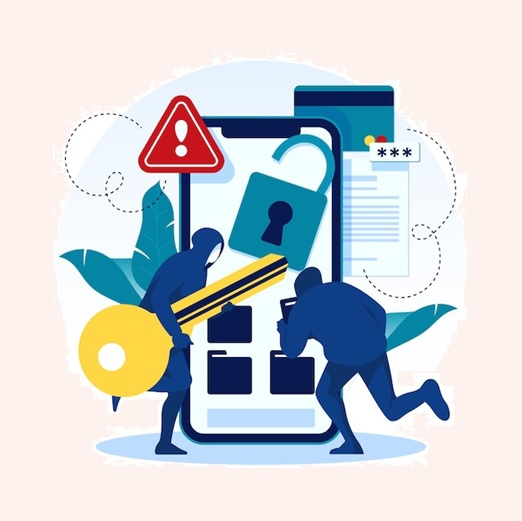Last updated on April 18, 2024

What is Piggybacking?
Piggybacking means sneaking past security measures by using an authorized person’s permission or access. It’s a huge problem for both physical and online security. Organizations and the general public need to know about it so they can protect themselves better.
Steps involved in piggybacking attacks
| 1. Physical access | By blending in with staff or visitors, the attacker gets into the building / place where the target organization is. |
| 2. Observing authentication | The attacker watches someone who is allowed to log in to a restricted system, like seeing someone type in their password on a computer. |
| 3. Mimicking credentials | The attacker gets the login details by watching over the shoulder, using cameras, keyloggers, or other spying tools. |
| 4. Accessing the system | With the stolen login details, the attacker can log into the restricted system, see confidential information, and install malicious software there. |
| 5. Covering tracks | To avoid getting caught early, attackers might use tricks like deleting access records and changing system files to hide what they did. |
| 6. Maintaining access | Sometimes, the attacker might even set up backdoors (secret entrances) or make new user accounts to maintain long term access. |
Common examples of piggybacking
| • Unprotected businesses | Many small businesses don’t put passwords on their Wi-Fi networks, so people can use them without askings. |
| • Publicly available passwords | Some places like coffee shops display the Wi-Fi passwords for everyone to see. That means anyone nearby can use the Wi-Fi, even after they leave the coffee shop. |
| • Personal hotspots | When people use their phones as personal hotspots, they usually don’t put passwords on the network. That means anyone nearby can connect to the unprotected network and use the internet. |
| • Home routers | Many people use default or easy-to-guess passwords on their home routers. These passwords can be easily cracked by hacking tools. Someone nearby, like a piggybacker, can then access and use the homeowner’s internet without them knowing. |
How to prevent piggybacking attacks
Here are some useful tips for organizations and individuals to defend against unauthorized access:
• Make long, complex Wi-Fi passwords.
• Keep your Wi-Fi passwords secret.
• Use a password manager.
• Regularly check the list of connected devices on your router’s admin page.
• Remove any devices that you didn’t authorize.
• Educate employees about piggybacking attacks.
• Use physical security like cameras.
• Have security rules for the whole organization.
• Conduct regular security audits.
• Stay alert to what is around you.
• Be careful with door access in secret areas.
• Make sure people are who they say they are.
• Tell relevant officials if you see something strange or suspicious
References:
https://www.ccslearningacademy.com/what-is-piggybacking-in-cybersecurity/
https://cybersecurityasean.com/daily-news/cybersecuritys-unwanted-passengers-piggybacking-and-tailgating

